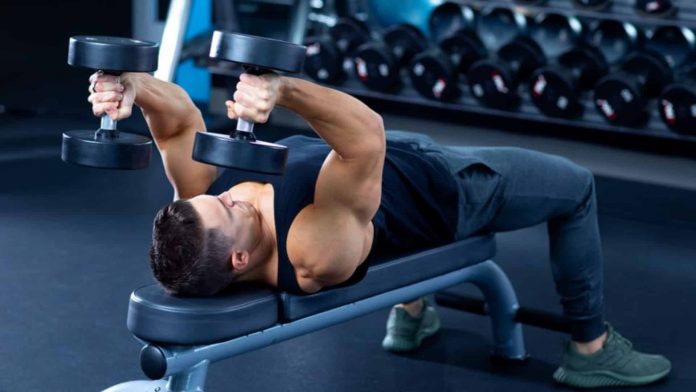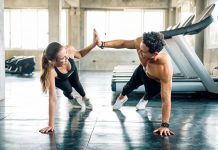For a well-balanced strength training program, you can’t forget about your chest muscles. This dumbbell chest workout gives the front of your upper body the attention it needs—not only does it focus on your chest muscles (the larger pectoralis major and the smaller pectoralis minor underneath it), but it also works the supporting muscles like your shoulders and triceps, too.
Building strength in these “pushing” muscles—chest, shoulders, and triceps—helps you perform everyday actions like pushing an object back on a high shelf, ACE-certified personal trainer Sivan Fagan, founder of Strong with Sivan in Baltimore, MD, tells SELF. It’ll also help you reduce your risk of injury, since it builds the strength you need to stabilize your shoulder joints and shoulder blades.
Another way it helps keep your muscles safe? Fagan’s chest workout relies heavily on single-arm dumbbell moves, which helps make sure you’re working each side of your body equally. That’s important, since it helps alleviate the muscle imbalances most of us have, says Fagan.
“When you push both dumbbells at the same time, your body just wants to get them from point A to point B. Your stronger side might take it through the full range of motion, but the other side might take it on a short cut,” she says. “It’s really hard for you to notice it on your own until you isolate your sides, and then you’re like, ‘Hold on, I can’t do it on this side.’”
Single-arm work also comes with a happy bonus: It really challenges your core stability, which turns these upper-body exercises into abs exercises, too. As you push each dumbbell, your core muscles have to fire to keep your body from rotating in the opposite direction, Fagan says.
“You’re combining the ‘push’ muscles with core stability and core strength in the workout,” she says.
The dumbbell chest workout starts with alternating-arm versions of the most challenging, compound moves—the chest press and shoulder press—in a superset. You’ll keep the rep range lower here than throughout the rest of the workout, so don’t be afraid to challenge yourself with heavier weight (as long as you maintain proper form).
Then you’ll finish with a triset. You’ll hit your chest and triceps with a close-grip chest press, go right into shoulder taps—which work your chest with an isometric contraction while you hold yourself up in a high plank—and end with overhead triceps extension, which isolate the muscles in the back of your arms that also fire in all pressing movements.


























